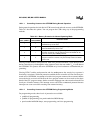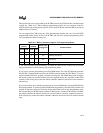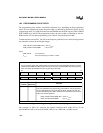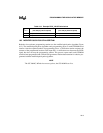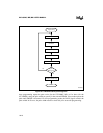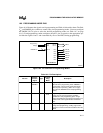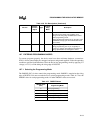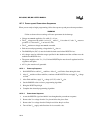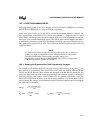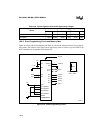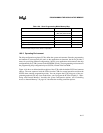
8XC196MC, MD, MH USER’S MANUAL
16-12
P2.2 PROG# I Slave Programming
During programming, a falling edge latches data on
the PBUS and begins programming, while a rising
edge ends programming. The current location is
programmed with the same data as long as PROG#
remains asserted, so the data on the PBUS must
remain stable while PROG# is active.
During a word dump, a falling edge causes the
contents of an OTPROM location to be output on
the PBUS, while a rising edge ends the data
transfer.
P2.4 AINC# I Slave Auto-increment
During slave programming, this active-low input
enables the auto-increment feature. (Auto increment
allows reading or writing of sequential OTPROM
locations, without requiring address transactions
across the PBUS for each read or write.) AINC# is
sampled after each location is programmed or
dumped. If AINC# is asserted, the address is
incremented and the next data word is programmed
or dumped.
P2.6 CPVER O Slave Cumulative Program Verification
During slave programming, a high signal indicates
that all locations programmed correctly, while a low
signal indicates that an error occurred during one of
the programming operations.
P2.7 PACT# O Auto
ROM-
dump
Programming Active
During auto programming or ROM-dump, a low
signal indicates that programming or dumping is in
progress, while a high signal indicates that the
operation is complete.
P4.7:0,
P3.7:0
PBUS I/O Slave Address/Command/Data Bus
During slave programming, ports 3 and 4 serve as a
bidirectional port with open-drain outputs to pass
commands, addresses, and data to or from the
device. Slave programming requires external pull-up
resistors.
P4.7:0, (MC,MD)
P3.7:0 (MC, MD)
P1.3:0, (MH)
P4.3:0, (MH)
P3.7:0 (MH)
PBUS I/O Auto
ROM-
dump
Address/Command/Data Bus
During auto programming and ROM-dump, ports 3
and 4 serve as a regular system bus to access
external memory. For the 8XC196MH, P4.7:4 are
left unconnected; P1.3:0 serve as the upper address
lines.
Table 16-6. Pin Descriptions (Continued)
Port Pin
Special-
function
Signal
Type
Program-
ming
Mode
Description



